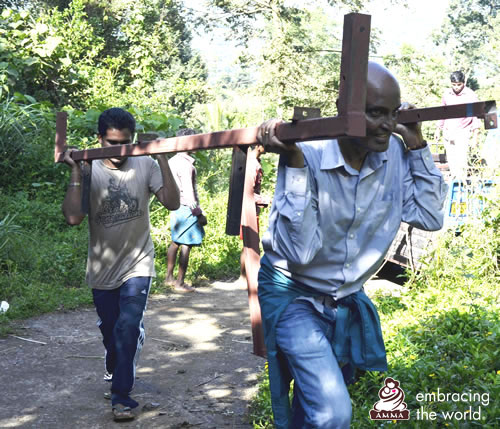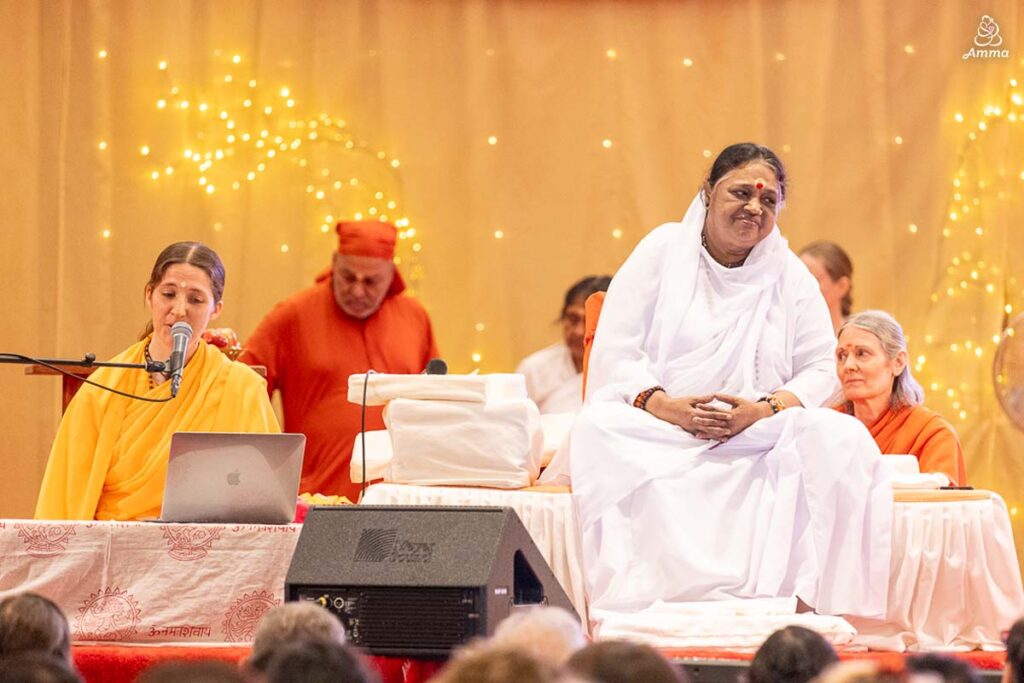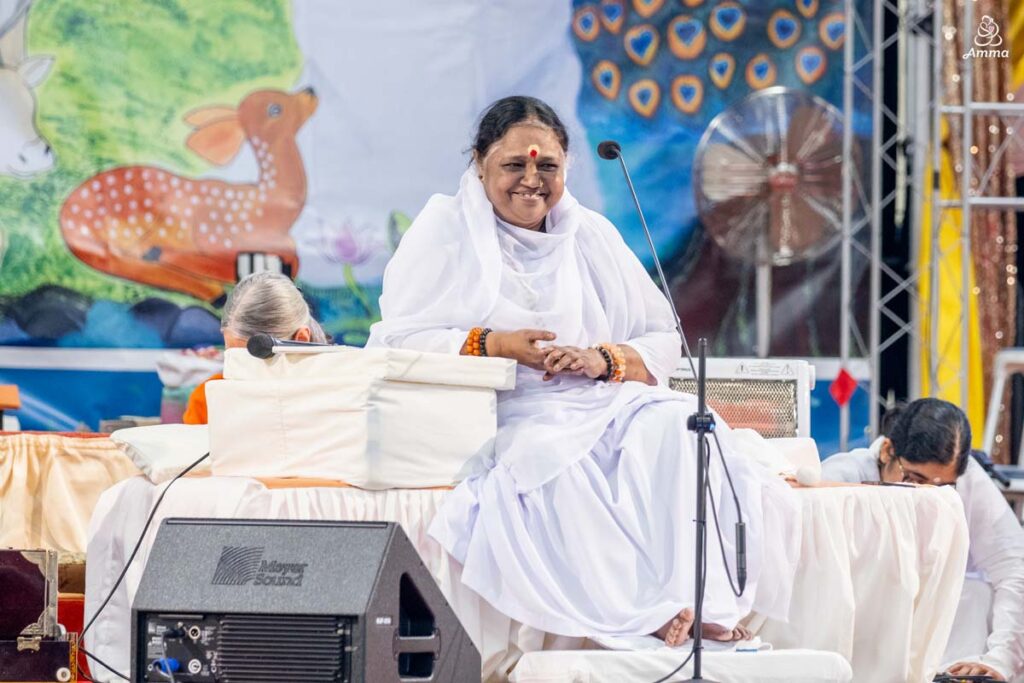Faculty and students of Amrita University brought solar-powered electricity to the remote tribal village of Valaramkunnu, Wayanad District, Kerala. With a safe and renewable source of electricity, the 300 residents will be able to make other improvements to their quality of life, such as access to educational resources, healthcare services, and infrastructure development, in a faster and more efficient manner.
Encouraged by Amma, the Chancellor of Amrita University, the Amrita Centre for Wireless Networks and Applications (AmritaWNA), had spent the past four years researching smart grid technology in order to find sustainable solutions for India’s energy needs. At the same time, students engaged with the university’s Live-in-Labs program, also initiated by Amma, were living in rural villages in order to study the problems of the villagers and come up with practical, affordable solutions.
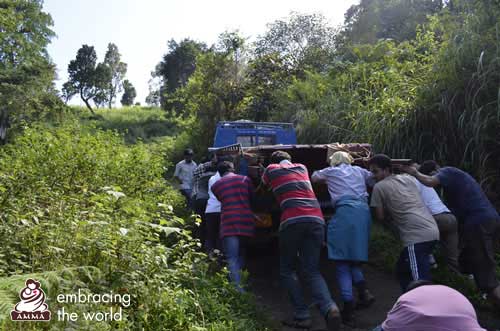
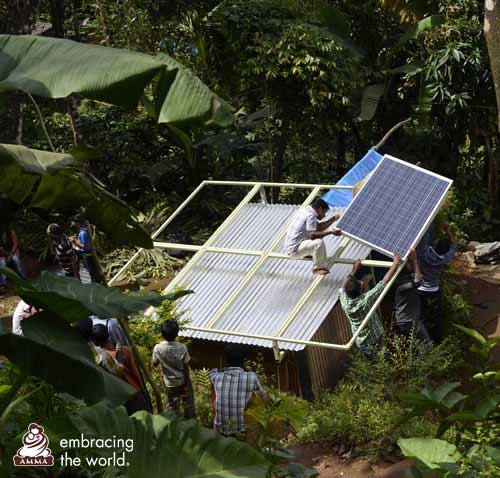
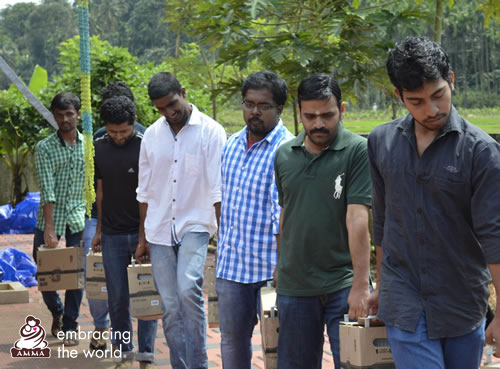
Valaramkunnu is situated in the middle of a natural forest and is spread out over two small mountains. The villagers have small, simple houses. Most of the villagers work for daily wages in the fields and few have more than a 1st or 2nd grade education. Electrical connectivity was limited to a few houses and they were so poorly wired that the residents lived in danger of electrical shock. Additionally, the people were too poor to pay their electric bill. This motivated the students to choose rural electrification as their Live-in-Lab project for transforming the village.
Alternative energy sources were limited, but there were clear areas for solar panels available. The 42 houses were grouped in clusters, so the team decided to make the electrification by cluster; each solar energy generation unit would supply power for six to ten houses. The students then proceeded to make a budget, design the solar clusters, select the solar equipment, obtain permission for installation from landowners, manufacture the necessary elements, and rewire the houses.
As the project continued, many students, on their own initiative, visited the houses, talking with the villagers and playing with the children. They got to know them and their problems very well. On behalf of the team, one of the students remarked, “We want to continue helping them and using our technical skills to improve their lives. We’ve also learned that we have some things to learn from them. They don’t take more than they need from nature, live in the present and generously share what little they have.”
The students remained enthusiastic and undaunted even in the face of setbacks. The supply truck was not able to negotiate the steep and slippery track up the mountain. After several failed attempts, the students and faculty helped push and pull the lorry as far as they could, only one third of the way up the mountain. However, the group was determined, and began unloading the lorry and carrying everything the rest of the way by hand. Four structures had to be brought up one mountain and two on the other, as well as the 45 kg batteries, steel rods and heavy metal structures for the panels. In all, two tons of material was carried by hand up the mountains.

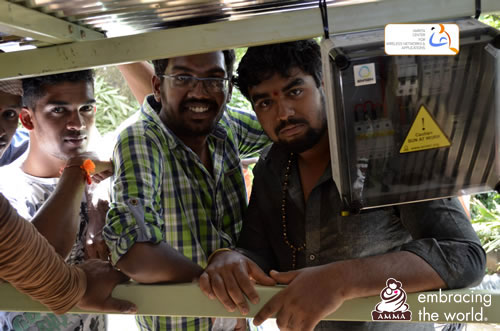
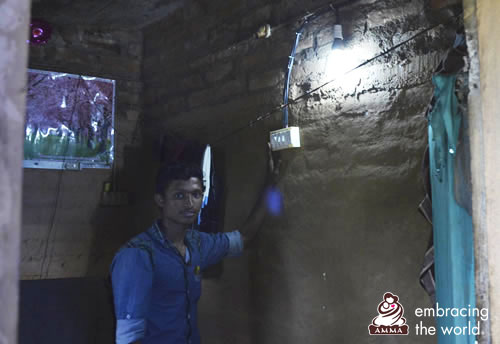
Most of the time, the students would climb up five steps and slide back two to three steps, yet their enthusiasm was not dampened by mud, rain or physical exertion. Seeing this, the villagers also joined in and the difficult work became like a party as spirits soared. About this experience, one student said, “A great feeling of satisfaction arose in me, I had really been giving of myself and we achieved our goal.”
The project put local inhabitants first, thus ensuring its sustainability. A solar installation had been provided for the village by another organization a few years ago, but technical failure of the system, a lack of local people qualified for maintenance, and the absence of support from the original installer had led the villagers to sell the system. Learning from this experience, the group adopted a different, more sustainable approach. The basic training of a few villagers was made a priority. Two local ETW volunteers who have established a good relationship with the villagers are also keeping a constant connection with them and reporting back to the team.
All 42 houses in the village now have a steady and sustainable source of electricity, each with three lights and a plug point. The students continue to improve the project by developing a micro-grid capable of energy exchange using innovative dynamic pricing models that could generate income for the village families. The Amrita WNA research team is also designing a monitoring system to analyze data from the field. This project has demonstrated the viability of solar micro-grids as a sustainable energy source in rural villages. Going forward, it will be integrated with Embracing the World’s program to provide electricity for over 100 villages across India.


